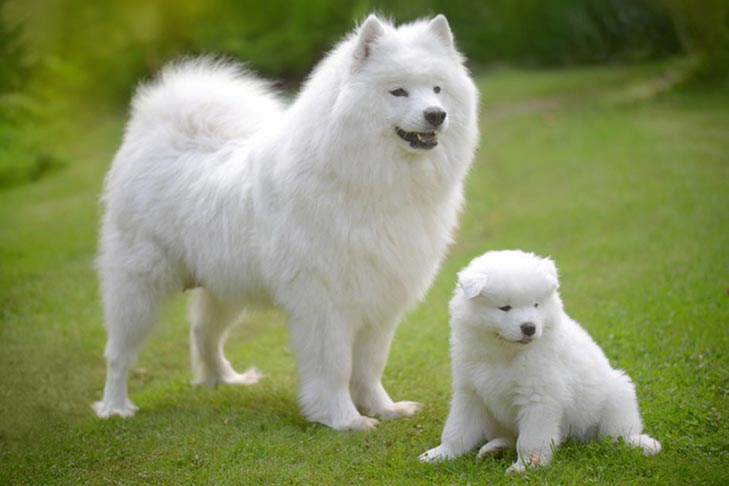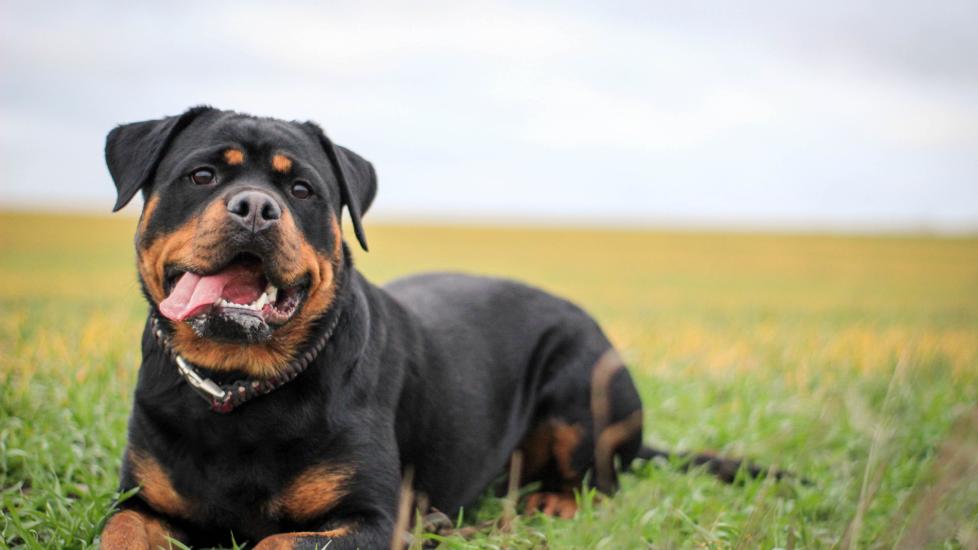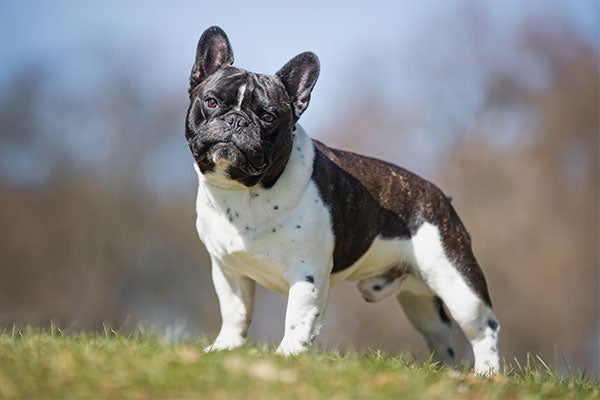The Most Expensive Dog Breeds and What Makes Them So Special
:strip_icc()/GettyImages-1214648223-a185de9c88984ca69f1ac720bdea6efe.jpg)
When you think about luxury, diamonds, holidays, and even vehicles may come to mind. Yet, in some circles, luxury can also mean owning the most expensive dog breeds. These breeds not only come with a hefty price tag, often reaching thousands of dollars, but they also require a level of devotion and care that matches their exquisite lineage.
What separates these costly canines from the rest often lies in their remarkable pedigree and unique features. Take the Tibetan Mastiff, whose roots trace back to the nomadic cultures of Tibet, valued for their protective instincts and majestic mane. Breeds like the Samoyed stand out for their stunning white coat and cheerful demeanor, with costs reflecting their rarity and health standards. Such traits combine beauty with a storied legacy, making owners willing to invest significantly in these noble companions.
The most expensive dog breeds, such as the Tibetan Mastiff and Samoyed, command high prices due to their rarity, unique features, and strong pedigrees. These dogs are special because of their striking appearances, protective instincts, and historical significance. Owning one requires a commitment to their extensive grooming and health needs.
The Most Expensive Dog Breeds and What Makes Them So Special
Many dog breeds stand out because of their high price tags. These dogs aren’t just expensive for no reason. Their cost often relates to their rarity, lineage, and unique traits. Breeds like the Tibetan Mastiff can cost up to $10,000 or more. They’re not just pets; they’re seen as symbols of status and luxury.
The Tibetan Mastiff, for instance, is known for its large size and protective nature. People value it for its thick mane and lion-like appearance. It was originally a guard dog in Tibet, protecting sheep from predators. Today, its majestic look and loyal nature make it a prized pet. Breeders work hard to maintain these characteristics, which justifies the high price.
Looking at another breed, the Samoyed shines with its fluffy white coat. It’s not just about looks; Samoyeds are friendly and adaptable. They originated in Siberia and were used by nomadic tribes to herd reindeer. This history gives them an interesting background that appeals to dog lovers. However, because of their beauty and nature, they can be costly to own.
Buying an expensive dog requires more than just money. Owning these breeds involves a commitment to maintaining their grooming, health, and happiness. This investment pays off for those who seek companionship and exclusivity. For many, these dogs are worth every penny. Owning such a pet brings joy and a sense of pride.
The World’s Top Five Most Expensive Dog Breeds
When it comes to expensive dog breeds, the Tibetan Mastiff is often at the top. These majestic dogs can cost anywhere from $5,000 to $10,000. Their thick coats and strong build make them stand out. Bred as guard dogs, they have an impressive history. Their rarity and unique features make them one of the priciest breeds.

Another costly breed is the Samoyed, known for its fluffy white coat. These dogs can also reach prices of $8,000 or higher. Friendly and outgoing, Samoyeds were originally used for herding and pulling sleds. Their charming appearance and pleasant nature drive their high cost. These are ideal family dogs but come at a hefty price.
The French Bulldog is another pricey pup, often costing up to $8,000. Their small size and playful personality make them popular. They are easy to groom and adapt well to apartment living. Their high demand and breeding challenges amplify their price. Many people pay a premium for this compact companion.
Rottweilers are known as protective guard dogs. A well-bred Rottweiler can cost up to $6,000. They are strong, loyal, and intelligent dogs. Initially bred to herd livestock, they now serve as excellent family pets. Their training and health care add to their value, making them another pricey but worthwhile breed.
Understanding the Price Tag: Factors that Drive up the Cost of these Breeds
Several elements contribute to the high price of certain dog breeds. One major factor is the dog’s pedigree. Dogs with a strong lineage of champions or purebred bloodlines cost more due to their proven genetic quality.
- Pedigree certification
- Rare bloodlines
- Show quality
These attributes ensure the dogs meet specific breed standards, making them more valuable.
Health testing is another significant factor. Responsible breeders invest in various health screenings to ensure their dogs are free of genetic disorders. This process includes tests for hip dysplasia, eye conditions, and other common issues.
- Hip evaluations
- DNA testing
- Eye certifications
These tests guarantee that the puppies are healthy, which increases their price tag.
Location plays a crucial role in dog pricing. Breeders in certain areas may charge more due to higher living costs or their reputation. Specifically, renowned breeders with a history of producing high-quality dogs can set higher prices. Additionally, importing dogs ensures unique bloodlines but adds to transport costs.
Finally, demand can drastically affect a breed’s price. Popular dogs featured in movies or owned by celebrities can see their prices skyrocket. High demand often means waiting lists and more competition among potential owners. These factors collectively drive up the cost of acquiring these prized dogs.
The Unique Characteristics of Each Expensive Dog Breed
The Tibetan Mastiff is striking with its lion-like mane and large build. This breed is known for its protective nature, making it an excellent guard dog. They are independent but loyal to their family. Their thick double coat allows them to withstand harsh weather conditions. Tibetan Mastiffs can weigh up to 150 pounds, adding to their impressive appearance.
Samoyeds are easily identifiable by their bright white, fluffy coats. Known for their perpetually smiling faces, they are often called “Smiley Sammies.” These dogs were originally bred for herding and pulling sleds in Siberia. Their friendliness and adaptability make them great family pets. Samoyeds need regular grooming to keep their coat in pristine condition.
French Bulldogs are compact dogs with bat-like ears and short noses. They are playful, affectionate, and love being the center of attention. This breed does well in apartments due to its small size and low exercise needs. French Bulldogs have a smooth coat that’s easy to manage. However, their short noses can lead to breathing issues, requiring attentive care.

The Rottweiler stands out for its strength and courage. Their muscular build and confident demeanor make them excellent guard dogs. Rottweilers are also incredibly intelligent and trainable. They were initially bred to herd livestock and pull carts. Though they are protective, they can be very loving with proper socialization.
Finally, the Akita is known for its loyalty and dignified bearing. This breed comes from Japan and has a strong hunting background. Akitas are quiet but very alert, making them good protectors. They’re also known for their thick double coat and curled tail. Regular exercise and mental stimulation are essential to keep them happy.
The Importance of Responsible Breeding and Ownership
Responsible breeding is crucial for maintaining the health and temperament of costly dog breeds. Breeders conduct health tests to avoid passing on genetic disorders. Proper record-keeping of a dog’s lineage helps ensure quality traits. This careful practice not only benefits puppies but also future generations. Ethical breeders prioritize the dog’s well-being over profits.
Ownership comes with significant responsibilities. Owning an expensive dog involves more than just financial investment. Regular vet visits, training, and socialization are essential for a happy, healthy pet. Owners must commit time and effort to meet their dog’s needs. A well-kept dog enriches the owner’s life and community.
Socialization plays a pivotal role in a dog’s development. Introducing puppies to different people, sounds, and environments is key. Early socialization builds confidence and reduces anxiety in dogs. This practice helps prevent behavioral issues later in life. A well-socialized dog is more adaptable and friendly.
Grooming is another responsibility, especially for breeds with thick or long coats. Regular brushing helps keep their coats clean and free of tangles. Some breeds require professional grooming services, which can be costly. Owners must be prepared for this ongoing commitment. Proper grooming ensures the dog looks and feels its best.
Lastly, exercise keeps a dog healthy and content. Every breed has its own exercise needs, ranging from daily walks to intense play sessions. Sufficient exercise prevents obesity and related health issues. Engaging in activities with dogs strengthens the bond between owner and pet. Happy pets enjoy longer, healthier lives.
The Joy and Commitment of Owning High-Priced Dog Breeds
Owning a high-priced dog breed is both a privilege and a delight. These breeds often bring joy with their unique personalities and stunning appearances. They offer companionship and become family members. Pets have a special way of brightening our days with their loyalty and playfulness. The joy they bring can be immeasurable.
With this joy comes a commitment that can’t be understated. High-priced dogs require regular grooming, health checks, and training. Each breed has its own specific needs ranging from exercise to diet. This means understanding and catering to these needs daily. This commitment strengthens the bond between the owner and the pet.

Social engagements often revolve around these special pets. Owners frequently connect with other dog enthusiasts, sharing tips and experiences. Many participate in dog shows, fostering a sense of community and pride. These interactions create lasting friendships among dog lovers. It becomes a lifestyle where the dog is at the center of socialization.
Financial responsibility is part of the ownership journey. Beyond the initial cost, caring for a breed includes food, vet visits, and unexpected expenses. However, many owners find this investment worthwhile for their pet’s love and companionship. Planning and budgeting ensure a stable home environment. Proper care equals a fulfilling life for the dog.
In return for these efforts, owners receive unwavering loyalty. Dogs of these breeds are known for their protective and gentle natures. They provide comfort, security, and endless affection. Having such a pet enriches daily life in countless ways. This combination of joy and commitment makes owning a high-priced breed an enriching experience.
Frequently Asked Questions
Luxury dog breeds captivate many with their unique traits and extensive history. Below are some common questions and answers about these intriguing breeds.
1. Why are Tibetan Mastiffs so expensive?
Tibetan Mastiffs are costly due to their rarity and majestic appearance. Their thick fur and lion-like mane make them stand out. Originally bred as guard dogs in the Himalayan mountains, they have a strong protective instinct. This combination of traits makes them a status symbol for many owners.
Additionally, the breeding process for Tibetan Mastiffs is quite selective. Breeders ensure only the best bloodlines are maintained, focusing on health and temperament. This careful breeding adds to the expense. Their large size also means higher care costs, contributing to the overall price.
2. What makes Samoyeds such desirable pets?
Samoyeds are loved for their friendly demeanor and distinctive “smiling” face. Originally from Siberia, they were used to herd reindeer and pull sleds. Their thick white coats make them attractive and well-suited for cold climates. Their playful nature endears them to families with children.
Beyond their looks, Samoyeds are known for being highly social and affectionate. They thrive on interaction with their human companions, often forming strong bonds. This makes them wonderful companions and family pets. However, their coats require regular grooming to keep them looking their best.
3. How do French Bulldogs adapt to apartment living?
French Bulldogs are great for apartment living due to their small size and minimal exercise needs. They do not require large spaces to be happy and are content with short walks. Their easy-going personality and love for lounging make them ideal indoor pets. They are usually quiet, reducing noise issues with neighbors.
However, French Bulldogs need proper training to manage any stubborn streaks. They are prone to certain health issues, so regular vet visits are important. Despite these concerns, their charming nature and compact size make them perfect companions for urban living.
4. What training needs do Rottweilers have?
Rottweilers are intelligent and eager to learn, requiring firm and consistent training. They thrive when given clear boundaries and structure. Early socialization helps prevent aggressive behavior, making them well-behaved family members. Obedience training is crucial for managing their strong protective instincts.
Rottweilers benefit from regular mental stimulation and physical activity. Training sessions should be engaging and varied to keep them interested. They excel in structured environments, such as obedience classes. Their loyalty and intelligence make them excellent working and companion dogs.
5. What should potential owners know about Akita dogs?
Akitas are known for their loyalty and protective nature, needing confident ownership. They are one of the few breeds that are naturally clean, having cat-like grooming habits. Though reserved with strangers, they are deeply devoted to their families. Socialization is essential to encourage a balanced temperament.
Akitas require regular exercise and enjoy activities that challenge them physically and mentally. Owners must be mindful of their independent streak when training. While generally calm, they need mental and physical engagement. With proper care and training, Akitas become loyal and cherished family members.
Final Thoughts
Owning an expensive dog breed is a unique and rewarding experience. These breeds come with their unique characteristics and extensive history, adding value to their companionship. While the financial investment is significant, the joy and loyalty they bring are priceless. Responsible breeding and ownership ensure that these remarkable dogs thrive.
High-priced breeds offer unmatched companionship and elevate the pet-owning experience. Their distinct traits and needs create a special bond between the dog and the owner. The commitment to their care and well-being exemplifies the depth of this relationship. Making the journey with these pets truly fulfilling.

